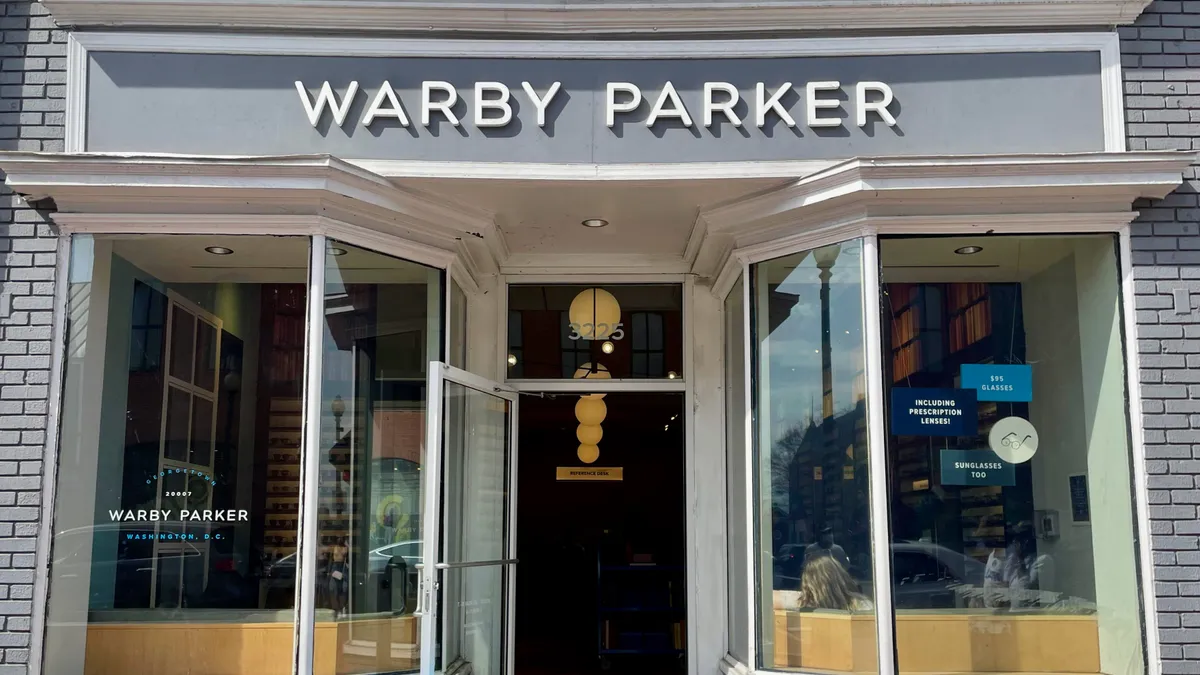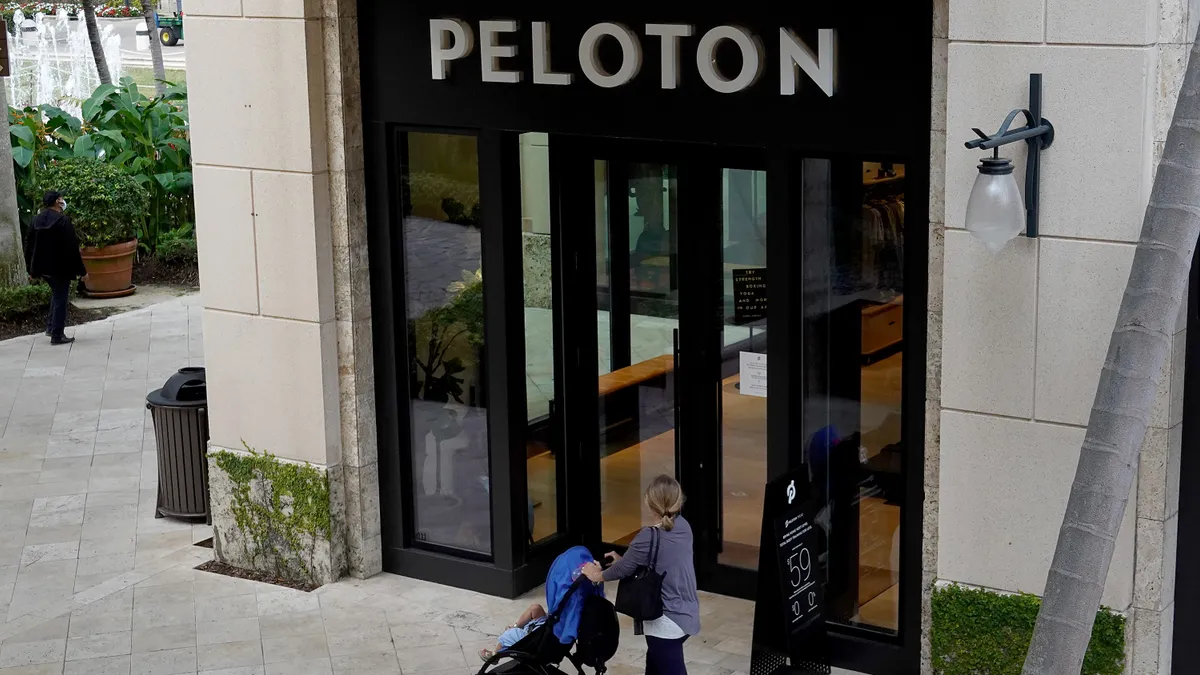IPOs in the retail industry have been few and far between this year.
The decision of whether or not to go public has become so precarious that some companies have decided to postpone previously announced plans. Mattress Firm in January announced a pause on its intent to go public, crediting the decision to “ongoing volatility in the IPO market.” Teen accessories company Claire’s in July also announced it would postpone its IPO plans “in light of public equity market conditions.”
IPOs in the U.S. for the first half of 2023 were up slightly at 63 IPOs compared to 51 in the first half of 2022, according to data analysis from EY. 2022 data showed a sharp decline in both merger-and-acquisition as well as IPO activity compared to the year before. Still, the market has slowed significantly from its boom in 2021 — when plenty of online-focused brands capitalized on the renewed consumer interest — with 416 total IPOs happening in the U.S. across industries, per EY.
The unexpected banking crisis, inflation and COVID-19 pandemic volatility have contributed to the slowdown in public offerings, but many of these factors may be starting to subside.
A few IPOs in the consumer and retail sector have brought a smidge of renewed hope this year.
Oddity — owner of makeup brand Il Makiage and skin care company SpoiledChild — in July went public, increasing its stock price multiple times before the official debut. Birkenstock in September filed for an IPO, with private equity firm L Catterton expected to control a majority of the combined voting power of its outstanding ordinary shares once the public offering is completed. Instacart made its market debut in September, with its valuation at just below $10 billion.
What do all these companies have in common? A net income.
Instacart reported a net income of $242 million during the first half of 2023, according to SEC filings. Meanwhile, Birkenstock brought in a net profit of 187.1 million euros ($196 million at current rates) during fiscal year 2022 and Oddity recorded $21.7 million in net income for 2022.
A focus on profitability — as opposed to a growth-at-all-costs mindset — has worked itself into the industry this year. The impact has meant funding for private brands is more competitive, and diversified revenue channels are more important than ever.
So what’s happened to the brands that went public before the market shifted its attitude about the bottom line?
Here’s a look at how some popular brands have performed since their public debut:
Warby Parker
When Warby Parker officially went public in September 2021, its net revenue was thriving.
The eyewear brand's stock hit a high in 2021
Its S-1 filing from the month before revealed that net revenue for the six months ended June 30 was up 53% from the year before at $270.5 million. However, the company maintained an operating loss and net loss in the first half of the year, which were $5.8 million and $7.3 million respectively.
The company went public knowing that it could potentially capitalize on a market where customers often paid high prices for eyeglasses sold through another party.
“By selling directly to our customers and cutting out the middleman, we are able to deliver exceptional value and remarkable customer service while maintaining high gross margins,” co-CEO and co-founder Neil Blumenthal said during the company’s first earnings call with analysts in November 2021.
Since its closing stock price of $53.68 on Oct. 1, 2021, the company’s stock has trended downward, as has the consumer preference for e-commerce with pandemic trends normalizing.
William Blair analysts led by Dylan Carden believe that “Warby Parker has created a strong and lasting brand in the relatively fragmented eyewear market,” according to emailed comments in June — though the picture isn’t perfect.
“At 16 times our initial 2024 adjusted EBITDA estimate, we believe valuation does not fully reflect ultimate earnings power of the model, given lower-than-initially-planned revenue growth and further blind spots from a lack of detailed retail segment disclosure and lower structural gross margins,” Carden said.
Since its public debut, the eyewear company has yet to record an annual net income, though adjusted EBITDA has remained steadily positive since 2018. Warby Parker’s closing stock price on Oct. 2 was $13.27.
On
As a public company, On has been fortunate enough to report an annual net profit during its last fiscal year.
The athletics brand's stock has risen as it’s reported record quarterly earnings results
The athletic footwear brand went public in September 2021 during the IPO boom with an estimated market value of $7.3 billion, according to reporting from Outside at the time. The Swiss brand’s business was predominantly through wholesale — with 37.7% of its net sales through DTC channels the year before — and its latest Q2 earnings from August showed DTC business share was 36.8%. However, the brand is increasingly focused on owned retail stores for growth.
On has pushed out record quarters in recent months, reporting in August that second-quarter net sales increased 52.3% year over year to 444.3 million Swiss francs (about $506.5 million at the time). However, its net income for the quarter dropped 93.3% to 3.3 million Swiss francs.
“We think [On] is one of the strongest growth stories in our space, with great products that are gaining brand awareness, gaining new points of distribution, and selling predominantly at full-price,” Wedbush analysts led by Tom Nikic said in emailed comments after On’s first-quarter earnings results in May. “Though valuation is quite lofty, the company has a tremendous amount of momentum and a long runway for growth.”
The company’s stock price hit a high of around $50 in November 2021, and although it experienced a dip during 2022, its value has been back on the rise throughout 2023. On’s stock price closed at $26.12 on Oct. 2, 2023.
Allbirds
Allbirds’ stock price has plummeted since going public and a rebound has yet to appear.
The sustainable lifestyle brand's closing stock price has floated close to $1 since March 2023
When the sustainability-focused lifestyle brand went public in 2021, it had both an annual adjusted EBITDA loss and net loss — two metrics that have since continued to widen. Its latest second-quarter earnings in August showed net revenue continued to drop while its net loss slightly improved year over year.
The recent performance comes as the brand executes a transformation plan, which includes reducing store openings to better focus on profitability. When the plan was announced, the company also revealed that its CFO would exit. At the time of the announcement, the company’s closing stock price dropped more than $1 compared to the day before.
Allbirds in May announced its co-founder and co-CEO Tim Brown would transition to the role of chief innovation officer and that it had recently enacted layoffs.
Allbirds’ closing stock price on Nov. 5, 2021, was $26.03 and has steadily declined. On Oct. 2, 2023, it was $1.15.
Peloton
At its highest, Peloton’s closing stock price hovered around $160. As of Oct. 2, the fitness company’s closing price was $5.39.
The fitness brand went public prior to the explosion of at-home workouts during the COVID-19 pandemic
The at-home fitness brand has undergone a multitude of changes over the past two years. Several co-founders — including former CEO John Foley — have left the company, hundreds of employees have been laid off and the company entered into its first wholesale deals.
CEO Barry McCarthy joined Peloton in February 2022 and has overseen the company’s new strategic plan. The company’s stock spiked slightly when the executive’s incoming was announced, but it has yet to get close to its high in 2021.
In its latest strategic shift, Peloton entered into a five-year global partnership with Lululemon wherein Lululemon will exclusively develop co-branded apparel sold through Peloton’s stores and online. The move came after Peloton launched its own private apparel line and settled a lawsuit with Lululemon which accused it of ripping off its designs.
Lovesac
Direct-to-consumer furniture brand Lovesac went public in 2018 prior to the 2021 IPO boom, though the company’s stock did benefit from that year.
The furniture brand's latest closing value is close to its initial opening
Earlier this year, the company made some C-suite changes, with its CFO Donna Dellomo retiring to become a senior strategic adviser and Keith Siegner taking over the role. Jack Krause also announced he would retire from the chief strategy officer role.
The furniture brand reported preliminary second-quarter results in August, saying that net sales are expected to be approximately $154 million while net loss is expected to be in the range of $500,000 to $1.5 million.
Lovesac has had to postpone the release of its formal second-quarter earnings as it works to restate previous financial results, which has resulted in a notification from the Nasdaq regarding delayed 10-Q filings. An SEC filing from Lovesac dated Aug. 15 noted that the company identified errors related to last-mile freight expenses that resulted in operating income and net income being “overstated by approximately $1.5 million to $2.5 million and $1.0 million to $2.0 million, respectively, for fiscal year 2023.” As such, the company has determined that several financial statements for fiscal year 2023 “should no longer be relied upon.”
At its high in June 2021, Lovesac’s closing stock price reached over $90. Its closing price on Oct. 2, 2023, was $19.10.
Purple
Mattress company Purple went public through a deal where it merged with an already public company in 2018, allowing it to skip the standard IPO process.
The DTC mattress brand saw its stock boom at the height of the COVID-19 pandemic
The company’s stock took a dip between 2018 and 2019, but spiked slightly in February 2020, around the time it announced a partnership with Raymour & Flanigan. Purple’s stock reached about $40 at its height in February 2021, shortly after which the company’s fourth-quarter results showed net revenue increased 39.9% year over year to $173.9 million and net loss decreased to $2.1 million from $12.7 million the year before.
Over the past year, the company has seen net losses balloon, shifted its strategy more toward premium customers and handled a takeover attempt from an activist investor. Purple received an unsolicited takeover bid from investors Coliseum Capital Management in September 2022, which Purple ultimately rejected.
After months of back and forth where Coliseum attempted to replace a majority of Purple’s board of directors and Purple enacted a poison pill, the parties settled the fight in April this year. The deal involved Purple creating a cooperative governance framework with Coliseum and adding three directors to its board nominated by Coliseum. Purple terminated its poison pill and Coliseum agreed not to exceed 44.7% ownership in the company.
Purple appointed a former Party City executive as its new CFO in September and its closing stock price was $1.65 as of Oct. 2, 2023.























